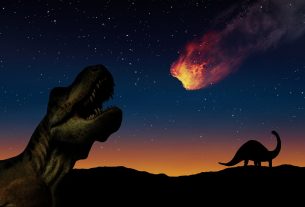In this Q&A, we discussed with author Charlotte Reemts the background behind her team’s recently published meta-analysis focused on invasive bluestems.
Why study this group of grasses?
Warm-season grasses from these two genera (Bothriochloa and Dichanthium) are interesting because they are important species in their native ranges but have also been introduced into other grasslands around the world. In many grasslands around the world, you can find both native and introduced species in these same genera. In their introduced ranges, these invasive bluestems cause problems by crowding out native plants, which reduces the number of insects, which in turn reduces food for small mammals, reptiles, and birds.
Why study fire effects?
Prescribed fire is a very important management tool to keep trees and shrubs out of the grasslands and also to maintain a diverse plant community of grasses and wildflowers. We wanted to understand whether and how we could use prescribed fire to control (or at least not encourage) these invasive grasses.
Why do a meta-analysis?
Previous smaller, site-scale studies suggested that fire at specific times of year (especially summer and fall) sometimes controlled the invasive grasses, but the effects were not consistent across sites and studies. By leveraging the power of many publications, reports, and student theses, we were hoping to find consistent patterns that could guide our use of prescribed fire.
How did you choose factors to consider in the meta-analysis?
The three big factors that we included were fire season, drought, and fuel load. We already knew that fire season was important based on previous studies. In a few studies, sites burned under dry conditions and sites with higher fuel loads (more grass biomass available to burn) seemed to show better control of the invasive bluestems. We also analysed many other variables (grazing, type of fire, soil depth, etc.) that turned out to be less important.
What did you learn about fire season?
Fire season was very important. We confirmed that summer and fall fires can often control the invasive bluestems and expanded the potential window for effective prescribed fires into the winter. We also learned that those same fires did not have consistent negative effects on the native grasses, so we really can use fire to favor native grasses over the invasive species. Importantly, we also found that the invasive grasses are not consistently encouraged by fire at any time of year, so we can use fire for other reasons (like controlling trees) even at times when those fires won’t harm the invasive grasses.
What did you learn about how drought interacts with fire?
The invasive bluestems were much more vulnerable to fires during dry times, especially compared to the native grasses. The invasive grasses are especially vulnerable to drought a month or so before fire, which can help land managers plan when to do their burns.

What were some unexpected results?
Fuel load did not influence fire effects at all! We expected that higher fuel load would lead to hotter fires and stronger control of the invasive grasses, but that was not the case. We think that fire effects are also influenced by other factors like weather conditions during the fire, but unfortunately that weather information is not reported consistently.
Even when we took all the most important variables into account, fire effects were still somewhat variable: sometimes the invasive grasses thrive even after hot summer fires. That means there are other important factors that we haven’t found yet.
Do you have a final message for land managers dealing with these invasive bluestems?
If you have a choice, burn in the summer or fall when it has been dry. However, if you have constraints on when you can burn, any fire is better than no fire and winter fires will not usually encourage the invasive bluestems. Also, record as much information as you can about your burn and the grassland’s condition before and after the fire: we need more information to fully understand fire outcomes.
Read the full article “Fire season and drought influence fire effects on invasive grasses: A meta-analysis” in Journal of Applied Ecology.


